
Linear Regression Complete Derivation With Mathematics Explained!
Last Updated on May 26, 2020 by Editorial Team
Author(s): Pratik Shukla
Machine Learning
Part 3/5 in Linear Regression
Part 1: Linear Regression From Scratch.
Part 2: Linear Regression Line Through Brute Force.
Part 3: Linear Regression Complete Derivation.
Part 4: Simple Linear Regression Implementation From Scratch.
Part 5: Simple Linear Regression Implementation Using Scikit-Learn.
In the last article, we saw how we could find the regression line using brute force. But that is not that fruitful for our data, which is usually in millions. So to tackle such datasets, we use python libraries, but such libraries are built on some logical theories, right? So let’s find out the logic behind some creepy looking formulas. Believe me, the math behind it is sexier!

Before we begin, the knowledge of the following topics might be helpful!
- Partial Derivatives
- Summations
Are you excited to find the line of best fit?

Let’s start by defining a few things
1) Given n inputs and outputs.

2) We define the line of best fit as:

3) Now we need to minimize the error function we named S
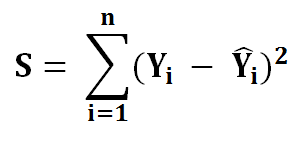
4) Put the value of equation 2 into equation 3.
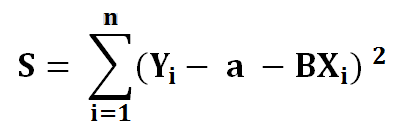
To minimize our error function, S, we must find where the first derivative of S is equal to 0 concerning a and b. The closer a and b are to 0, the less total error for each point is. Let’s find the partial derivative of a first.
Finding a :
1 ) Find the derivative of S concerning a.
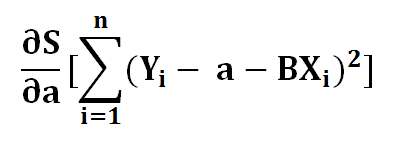
2 ) Using the chain rule, let’s say
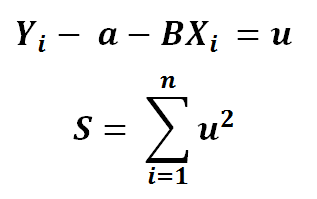
3) Using partial derivative
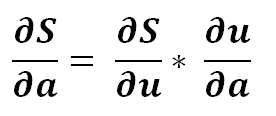
4) Expanding
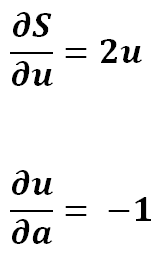
5) Simplifying

6) To find extreme values, we put it to zero

7) Dividing the left side with -2

8) Now let’s break the summation in 3 parts

9) Now the summation of a is

10) Substituting it back in the equation

11) Now we need to solve for a

12) The summation of Y and x divided by n, is simply it’s mean

We’ve minimized the cost function concerning x. Now let’s find the last part which S concerning b.
Finding B :
1 ) Same as we have done with a

2) Finding the partial derivative
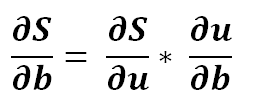
3) Expanding it a bit
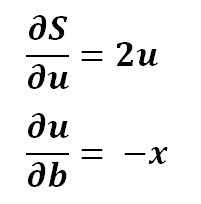
4) Putting it back in the equation

5) Let’s divide by -2 both sides
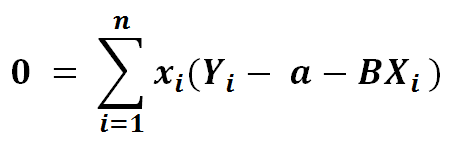
6) Let’s distribute x for ease of viewing

Now let’s do something fun! Remember, we found the value of earlier in this article? Why don’t we substitute it? Well, let’s see what happens.
7) Substituting the value of a


8) Let’s distribute the minus sign and x

Well, you don’t like it? Let’s split up the sum into two sums
9) Splitting the sum

10) Simplifying

11) Finding B from it

Great. We did it. We have isolated a and b in the form of x and y. It wasn’t that hard, was it?
I still have some energy and want to explore it a bit!
12 ) Simplifying the formula
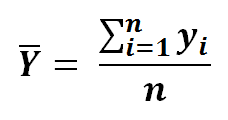
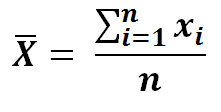
13) Multiplying numerator and denominator by n in equation 11

14) Now if we simplify the value of a using equation 13 we get
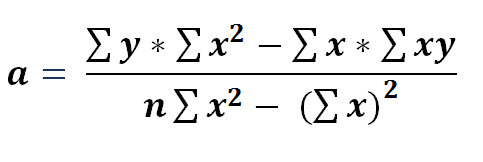
Summary 🙂
If you have a dataset with one independent variable, then you can find the line that best fits by calculating B.

Then substituting B into a

And finally substituting B and a into the line of best fit

Moving Onwards,
In the next article, we’ll see how we can implement simple linear regression from scratch (without sklearn) in Python.
And please let me know whether you liked this article or not! I bet you liked it.
To find more such detailed explanation, visit my blog: patrickstar0110.blogspot.com
(1) Simple Linear Regression Explained With Its Derivation.
(2)How to Calculate The Accuracy Of A Model In Linear Regression From Scratch.
(3) Simple Linear Regression Using Sklearn.
You can download the code and some handwritten notes on the derivation on Google Drive.
If you have any additional questions, feel free to contact me: shuklapratik22@gmail.com.

Linear Regression Complete Derivation With Mathematics Explained! was originally published in Towards AI — Multidisciplinary Science Journal on Medium, where people are continuing the conversation by highlighting and responding to this story.
Published via Towards AI
Take our 90+ lesson From Beginner to Advanced LLM Developer Certification: From choosing a project to deploying a working product this is the most comprehensive and practical LLM course out there!
Towards AI has published Building LLMs for Production—our 470+ page guide to mastering LLMs with practical projects and expert insights!

Discover Your Dream AI Career at Towards AI Jobs
Towards AI has built a jobs board tailored specifically to Machine Learning and Data Science Jobs and Skills. Our software searches for live AI jobs each hour, labels and categorises them and makes them easily searchable. Explore over 40,000 live jobs today with Towards AI Jobs!
Note: Content contains the views of the contributing authors and not Towards AI.














